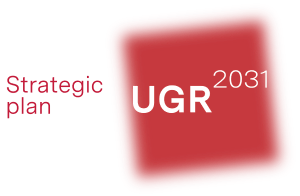Why?
In order to achieve digital transformation within a SmartUniversity, institutional commitment is required to undertake a variety of actions or projects that can have an impact both on the academic and human aspects of university life. Over the last decades, the UGR has not only proposed and implemented technological solutions for intelligent ICT infrastructures and services, but has also applied sustainability criteria. In this sense, it is vital to continue promoting this objective in the next decade, making use of the infrastructures, services and technological projects of the institution, as well as leveraging the new technological developments being deployed by the industry. It is necessary to implement intelligent systems that integrate the SmartUniversity concept (Smart-UGR), capable of fulfilling both basic university functions as well as others related to coexistence, rest, leisure, sport, mobility or conciliation in a sustainable way.
How?
By implementing intelligent systems that enable good connectivity and mobility between campuses. By developing management processes and tools that enable the sensorisation of the institution's physical resources. By establishing alliances with other administrations and companies that have similar resources and interests. By generating renewable energies that reduce the carbon footprint and by deploying accessible tools and control panels.
Acciones prioritarias
Impulsar el despliegue y ampliación en todos los espacios universitarios de procesos y herramientas de gestión de sensores en todos los recursos físicos.
Favorecer alianzas con otras administraciones públicas o empresas cercanas con intereses similares (Smart-City, Smart-Alhambra, etc.) o con capacidad de colaboración para sensibilizar, motivar e implicar a toda la institución en su consecución.
Promover el uso de sistemas bioclimáticos, domotización de espacios, monitorización-automatización de elementos en espacios abiertos, seguridad y vigilancia, control climático interior y exterior, tratamiento de residuos, reciclaje, transporte-movilidad sostenible intra e intercampus (viales y vehículos), señalización inteligente y dinámica, puntos de recarga, clases abiertas (en espacios exteriores con la tecnología adecuada), etc.


